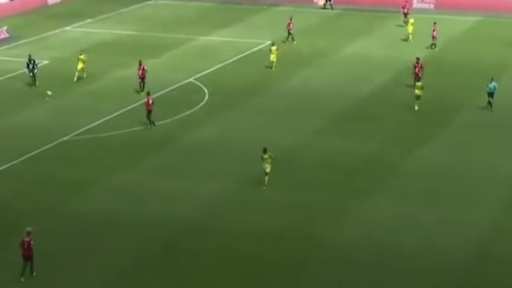WORLD CLASS COACHING
Build Up From the Back - A Tactical Analysis
By Luca Bertolini
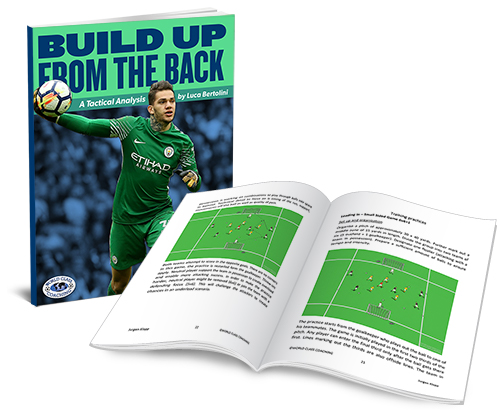
Table of Contents
PART FOUR
How the Top Coaches Have Success Building From the Back
How the Top Coaches Have Success Building From the Back
Maurizio Sarri's Sss Napoli (2015-2018)
Napoli always started with a very fluid 1-4-3-3 formation with the players who are free to interchange, especially the front 3. The two defenders are a perfect partnership with Albiol technically skilled and Koulibaly providing power and with a good basic technique.
Sarri has coached perfectly the build up phase, like all the others phases, and the players knew exactly what to do at what point of the game.
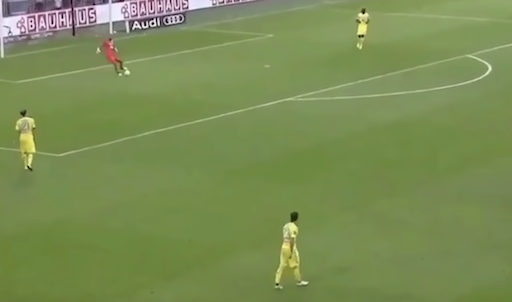
When Pepe Reina had the ball the two center backs pushed very wide and Jorginho dropped in between them or in front of them, if they were free from pressure.
Jorginho was the midfield playmaker, setting the rhythm of play, with a very similar passing style to Sergio Busquets.
He used to play in front of the defense line, forming a rhombus, with Pepe Reina as lower vertex and the center defenders as wider support (a 4 v 2 is formed here).
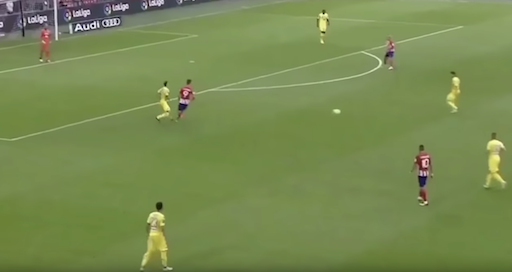
Jorginho also dropped back as a third center defender to create numerical advantage, if the opposition pressed up high or even to invite the opposition pressure, to open space, behind the first line of pressure.
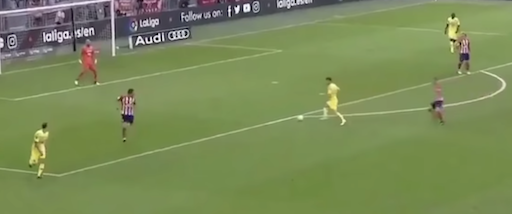
The two fullbacks were very complete in defense and in attack, with Ghoulam always trying to overlap and Hysaj a bit more stationary, but with the same goal of creation of a strong side to move the opposition.
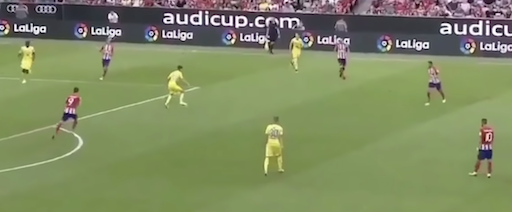
Here again the same 4 v 2 shape to ensure the numerical advantage at the first stage of the move.
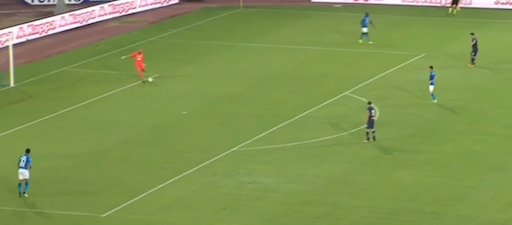
Allan is very good as a box-to-box midfielder, helping out in both the phases of play, attacking with Hamsik, an aggressive midfielder, playing almost as shadow striker or often interchanging the positions with Mertens.
He was often involved in the playing out sequences in the middle third after a first phase at the back.
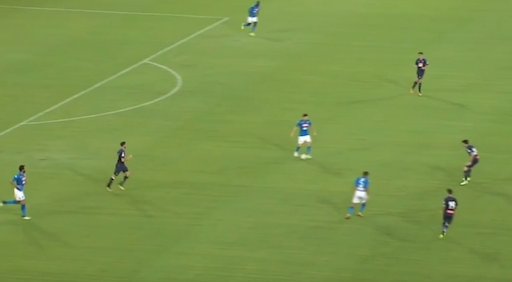
Pep Guardiola's Bayern Munich (2013 - 2016)
The traditional formations become useful only for understanding the foundation of a philosophy; it all depends on the phase of play and opponents, all the rest was about the "Juegos de Posicion".
The moves began at the back, with the distribution of the goalkeeper, Manuel Neuer, and the two center defenders, forming a line of 3 at the back. A series of short passes had the goal to move the opposition defenders and to open the spaces to get through the highest lines of pressure.
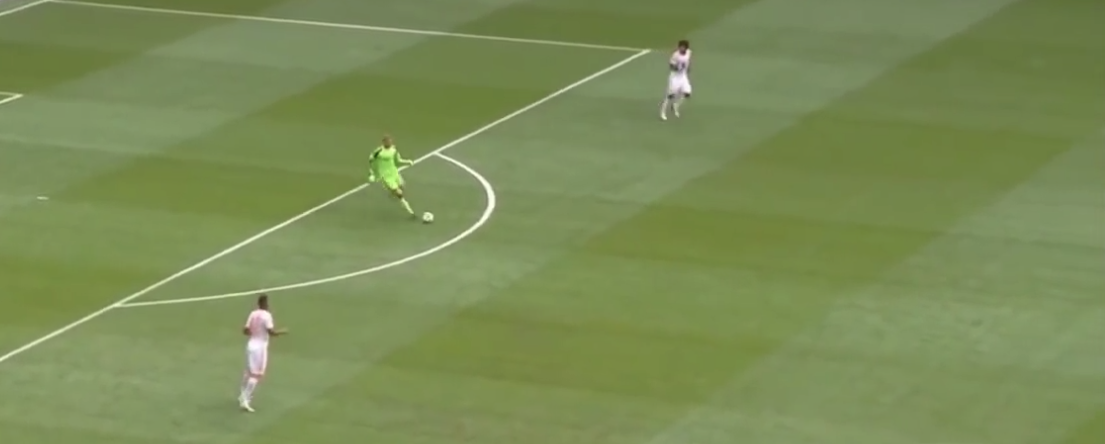
The second solution was to organize the beginning of possession phases thanks to a midfielder, dropping between the center defenders, who distributed precisely with the same aim to overcome a first line of pressure.
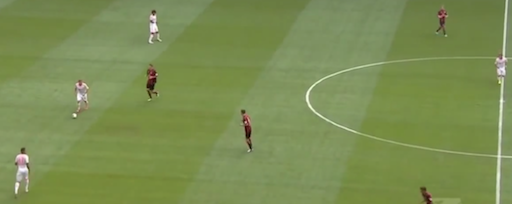
If this first pressure line couldn't be overcome, due to the closure of passing lanes, the first aim at the back was to move this opposition line to create a weak side were to dribble the ball up.
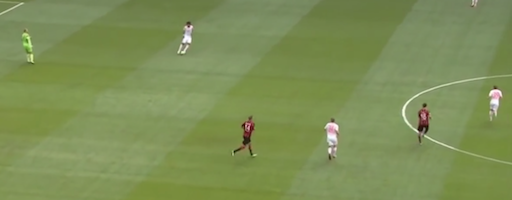
The center backs with the holding midfielder, or anyway the line of three at the back, often stand inside the opponent’s half, as Bayern created overloads during attacking phases. Under Jupp Heynckes, the defenders were positioned an average of 39.5 yards from their own goal; 44.1 yards under Guardiola.
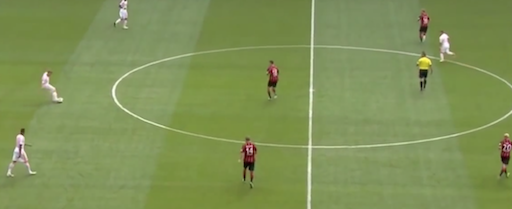
As Bundesliga was a more defensive league than La Liga or now the Premiers league, the building up phase could also be brought until the middle line, as many team defended deep in their first third, trying to close the spaces in front of the goal.
Manuel Neuer was used to bring up the ball far outside his penalty area in possession phases and he was often already positioned to break up the counterattacks. This allowed Bayern’s fullbacks to step up and to support the attacking midfielders.
The creation of numerical advantage has been always one of the main principles of play of Pep Guardiola, all over the pitch and in all the possession phases.
As the opposition pressed high, the starting team shape to play out was made by the goalkeeper at the back, two wider center backs, the organizing midfielder and another dropping back midfielder; in this situation, a 5 v 3 position game was clearly created.
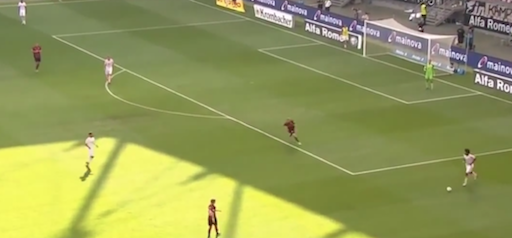
The main difference between the possession style of play that Guardiola gave to his Barcelona and then to Bayern Munich, is:
• the creation of a strong area on the ball, with high density of player of both the teams to find a space out of it then (Barcelona),
• and the creation of a strong side where to invite the pressure of the opposition through the possession to find space on the other side.
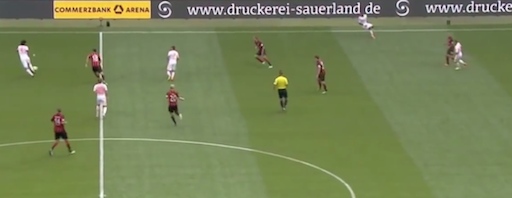
Guardiola liked to play with as many midfielders as possible; the fullbacks and wingers had similar qualities to center players, and overloading the central channel was one of the most important points in his coaching philosophy.
The creative midfielders were free to move, to interchange and to combine with the fullbacks and the wingers. The wingers and the central midfielders had close relationships in combination play, always set up to play one-twos down the touchline, after a switch of the side.
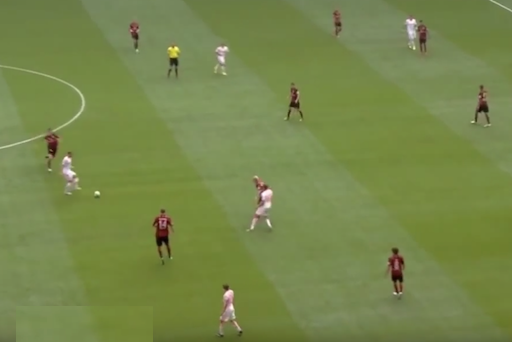
Pep Guardiola's Manchester City (current)
The goalkeeper creates numerical advantage to build up and play out (usually a 3 v 2 duel)
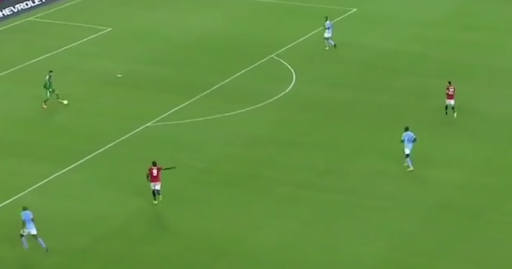
If there is no pressure, the back line of three or the center balance midfielder dribbles the ball to invite the opposition out, opening the space at the back.
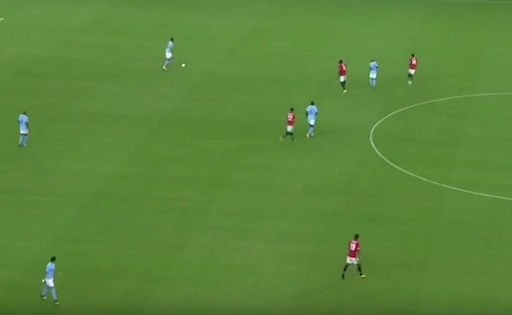
The center midfielder drops back to create numerical advantage (usually a 4 v 3 or a 5 v 3) against the high pressure of the opposition.
After back passes toward the goalkeeper, Man City is used to fix the ultra offensive pressure in two ways:
• With long kicks of the goalkeeper to the winger (a new solution, not commonly used at Barcelona and Bayern Munich)
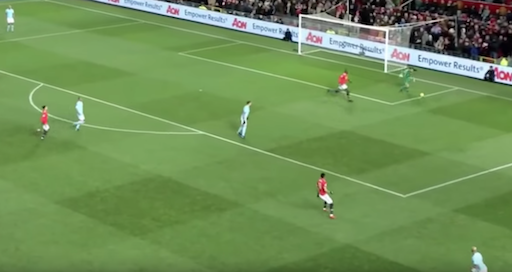
• Or through fast combinations inside the first third...
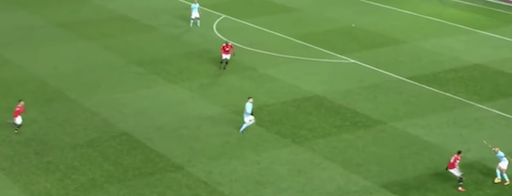
...to free the center balance midfielder.
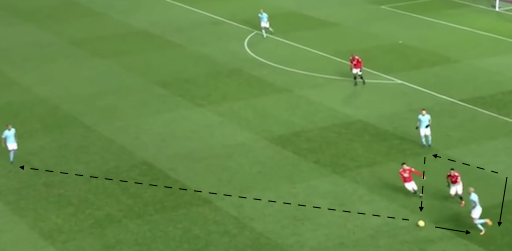
Manchester City typically has a large average of ball possession, following the principle of controlling the game. Each pass has an underlying intention to open up spaces or moving around opponents; move the ball to move the opponents.
During possession, City is usually shaped in a 3-1-5-1 formation; Fernandinho is positioned in front of the defense, while the fullbacks move high up the pitch, occupying the flanks near David Silva and Kevin De Bruyne.
Fernandinho position is crucial for being able to connect the defense and the advanced players of the team in possession; he must be positioned where he could receive the ball and pass to his teammates ahead of him and occasionally positioned himself in close proximity to the attacking midfielders.
Marcelo Bielsa
Marcelo Bielsa is one of the most exciting and innovative coaches in soccer and his brand of attacking possession-based games, played with a high tempo and often based on a 1-3-3-1-3 formation, has influenced managers like Pep Guardiola, Mauricio Pochettino, and Diego Simeone.
In this first footage, the first two lines of three are those involved throughout the build up phase of play when starting from the goalkeeper. The first line creates a 3 v 2 duel (4 v 2 with the goalkeeper).
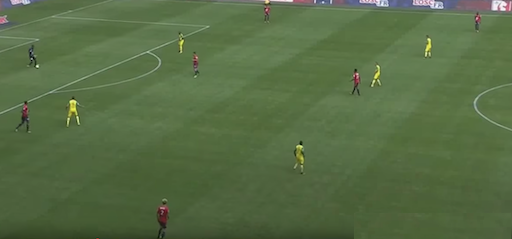
The second upper one is placed along the whole width of the pitch, to create further passing options for the back three. The three players of the third line are placed along the half-spaces (two of them), and the last one creates an imaginary vertical middle line, together with the goalkeeper, the center back and the center midfielder.
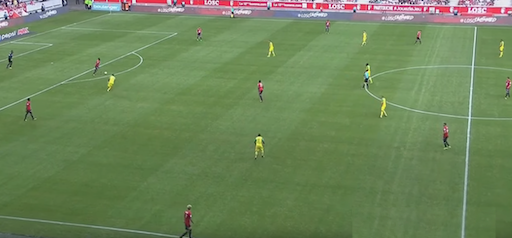
These are the two main principles of play to build and to play out, which are commonly used by Bielsa with all his teams:
1) Move the ball to create a strong side on the field, even with numerical disadvantage, but with high density of players shifting across toward the ball area.
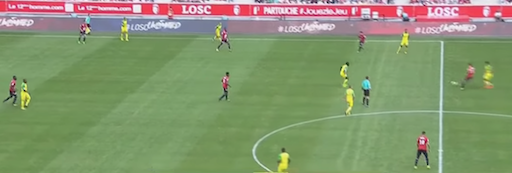
2) Players rotate wide and straight-ahead to create space and to play out forward; the fullback is in possession and the right advanced midfielder creates space for the center lower midfielder to run in.
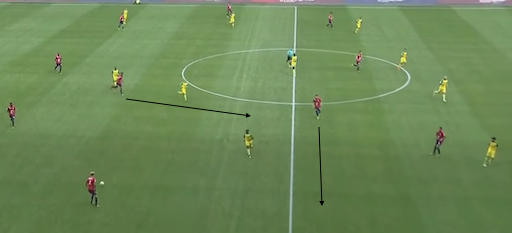
In further footage, we can analyze a different shape to build up of the Athletic Bilbao (2011-2013). Athletic Club reached the finals of both the Europa League and the Copa del Rey and the style of football they played when they were at their peak level was a great trademark of Bielsa football.
A 3-1 formation is clear at the back, with a zonal numerical advantage near the opposition forwards (3 v 2) and a wider player in possession; a line of 4 shapes the further line of possession to progress.
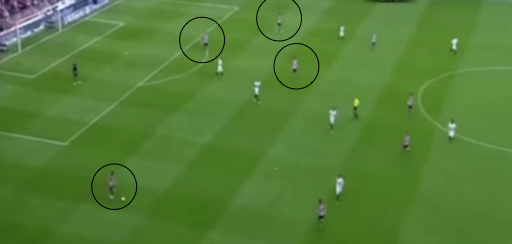
There was a focus on passing out from the back, with the two center backs coming deep to collect the ball and the fullbacks pushing wide and only moving forward, when there was space to exploit, whether on the outside or the inside of the winger ahead. A holder, a runner and a playmaker formed a three man midfield sector.
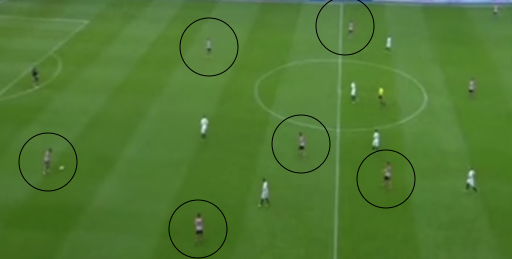
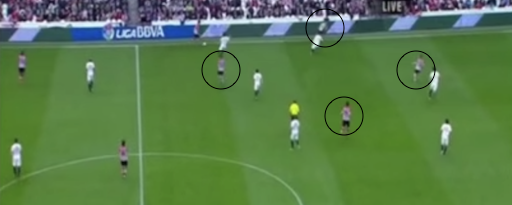
Bielsa often used midfielders in the defensive line for Chile, believing they were more mobile than some of his centre-backs, and also better at starting the moves. These were the main principles of play:
1) Use diagonal passes to play toward a close area
2) Use vertical pass to play through the zones
3) Midfielders move along vertical channels
4) Wingers stayed placed close to the flank, stretching the opposition line
5) Forwards shifted across a free area (wide or center)
6) Overload a flank with the fullback, the winger, two midfielders and the forwards
To play out from the back against the ultra offensive pressure of the opposition, the first aim was to create a numerical advantage overloading the ball area; a 5 v 3 can be recognize here, as well as a potential 2 v 1 just out of the penalty area.
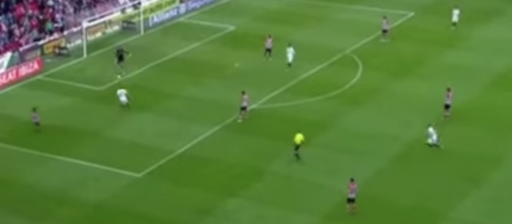
The second objective was to play in between the lines as soon as possible, to overcome at least one lines of the opposition, finding the time to turn and play forward.
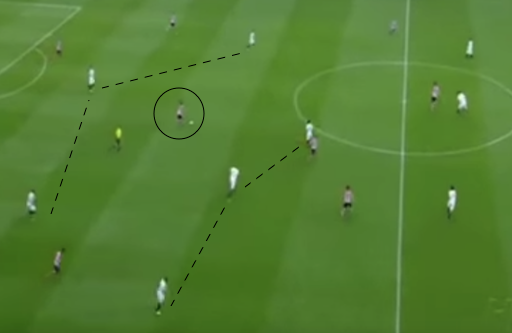
This is another sequence and progression to play out under pressure; again overloading the ball area,
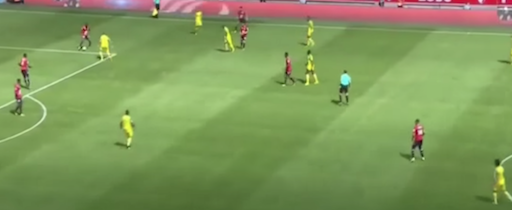
and changing the side of the first third, toward the opposite fullback, through the goalkeeper.
